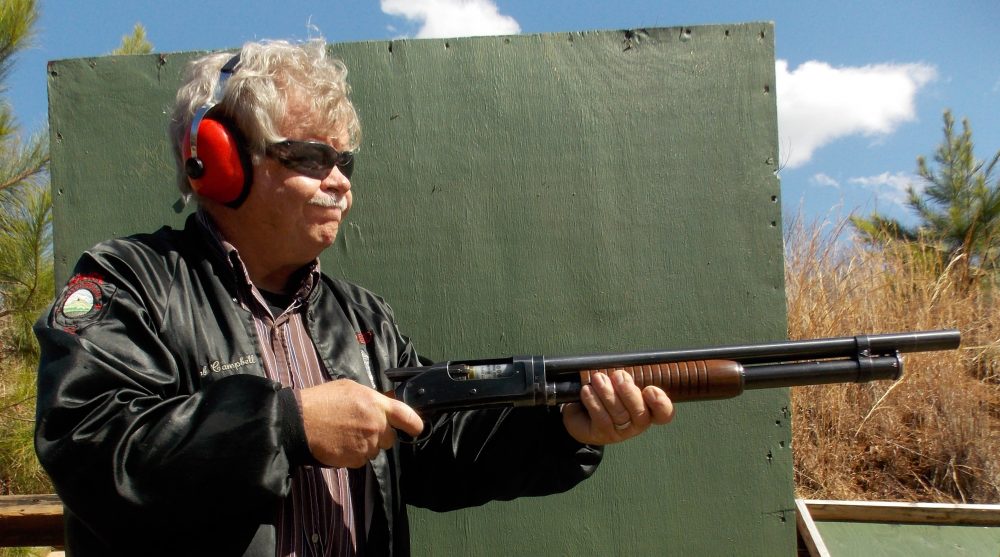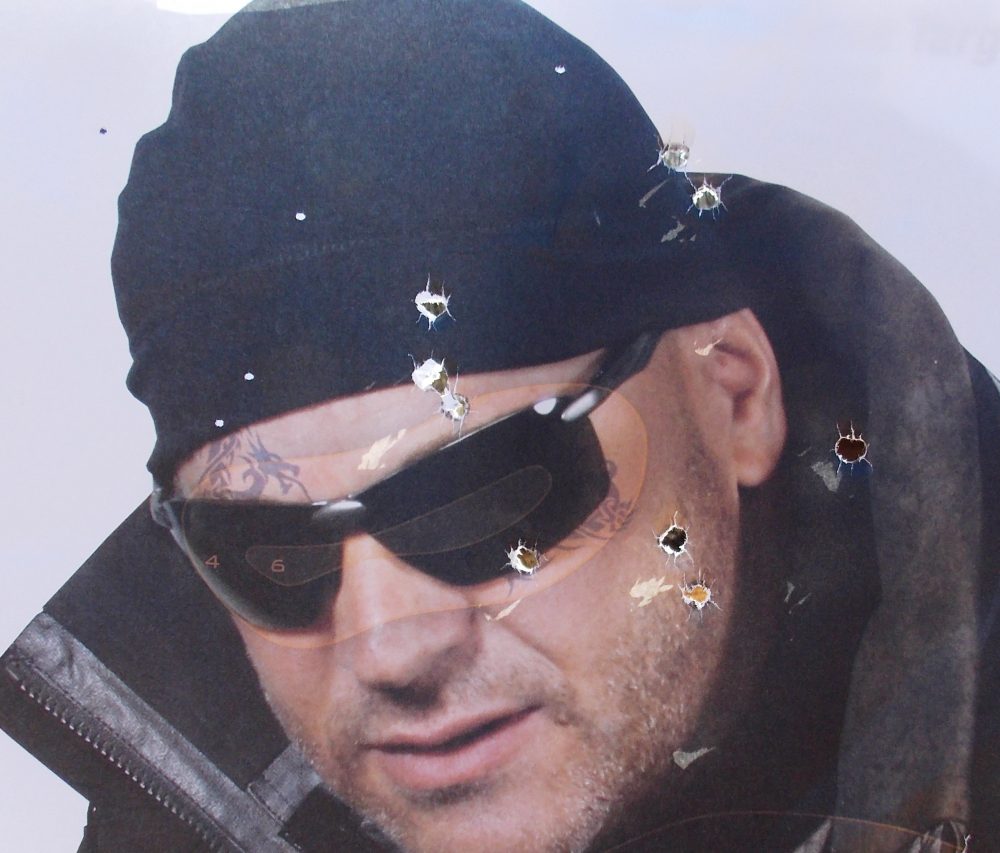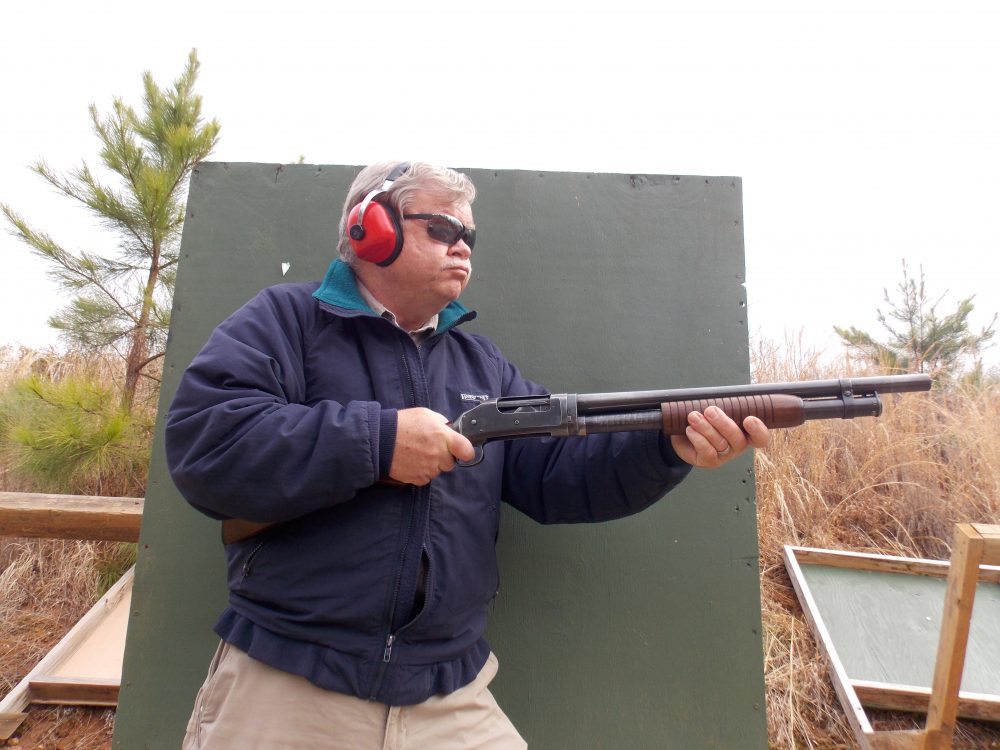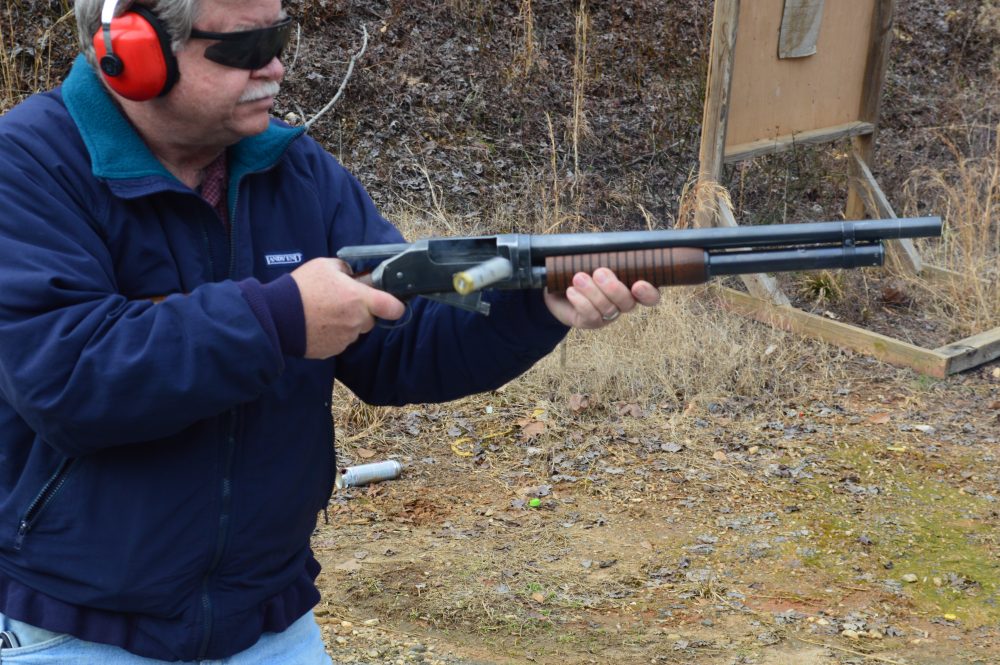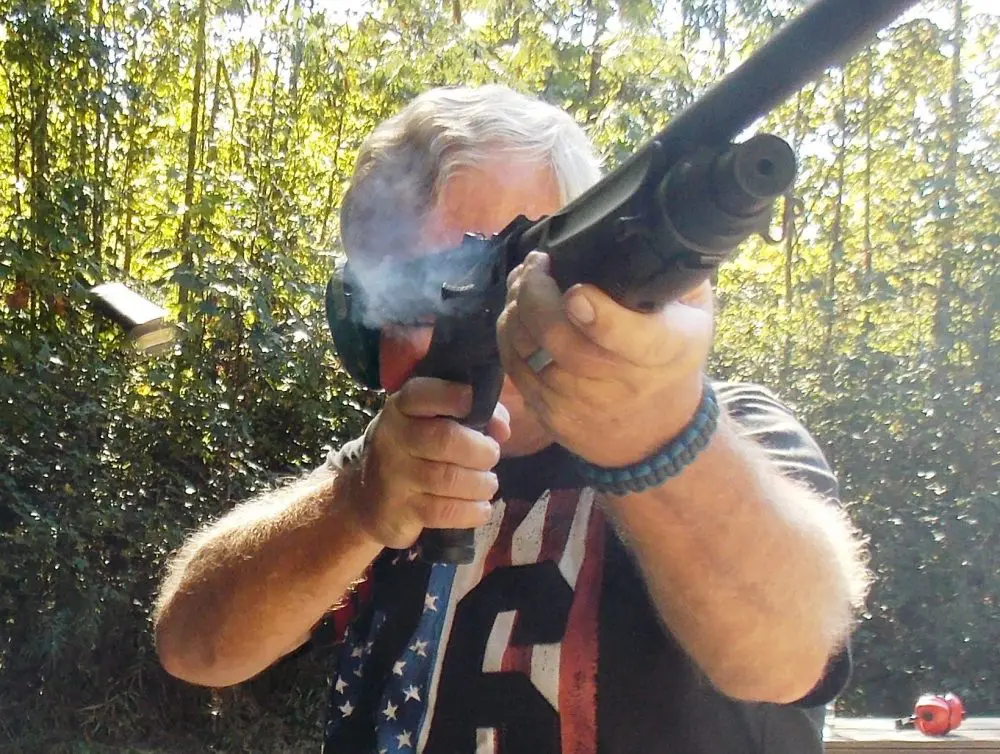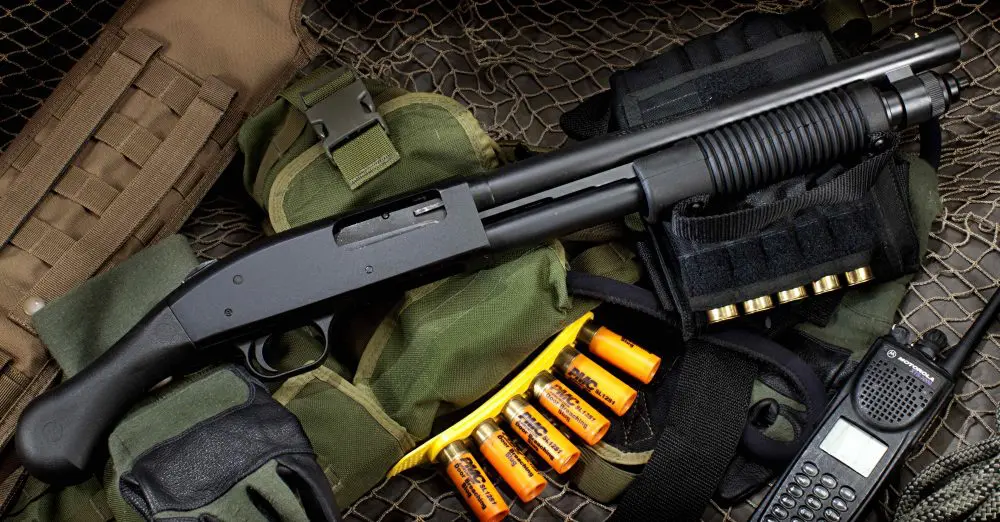Overall handling of Winchester Model 97 cannot be faulted. Extraction and ejection are positive.
The Winchester Model 1897 was designed by John Moses Browning. Though all Browning designs were not successful, the majority were, and the 97 is no exception. This shotgun has all the earmarks of a classic firearm and is not only a war dog, but a long-serving law dog as well.
Here at S.W.A.T., the peace officers among us are interested in public defense, and other readers are primarily interested in personal and home defense.
While the Model 97 has been out of production for over 50 years, clones or copies of the Winchester shotgun are available today. I cannot comment on their quality, but the operation and capability of the shotguns are similar to the original.
The Winchester 97 has appealing features that make it viable for modern shooters. It was among the greatest shotguns of its day and a popular improvement over the less-than-perfect Winchester 93.
Loading Winchester 97 is as fast as any other shotgun.
Table of Contents
OPERATION OF THE MODEL 97
The 97 was a necessary improvement to handle smokeless powder. It featured a smooth and reliable pump action—even today, tie ups and short cycles are rare—and it was made of the best material of the day.
When operating the Winchester, once the shotgun is cocked, a slight forward movement of the forend is required before the action may be rocked to the rear. Usually recoil is all that is needed.
The magazine holds five 12-gauge 2¾-inch shells. A difference between the Winchester action and modern shotguns with their disconnector is that the 97 may be “slam fired” by simply keeping the trigger pressed as the action is worked. There is no disconnect or manual safety. I wanted to see how this worked out in practice.
Once the Winchester 97 shotgun is loaded, the hammer may be carefully lowered. Then the hammer is pulled back slightly until it clicks. This is the safe position, in which the hammer does not touch the firing pin, although it should not be relied on.
The Winchester 97 shotgun has earned an enviable reputation for reliability. Maintenance is simple, but takedown is slightly more complicated than the modern pump-action shotgun. Still, pressing a button to release the magazine and twisting the barrel out of alignment to remove it aren’t difficult.
Buckshot blast to the face of an OPSGEAR target.
HISTORY OF THE MODEL 97
The Winchester 97 was offered in “riot gun” configuration with a 20-inch barrel for most of its production life. Many were used by law enforcement and prison guards, and all were marked cylinder bore.
The most famous was doubtless the World War I Trench Gun with ventilated barrel cover and integral bayonet lug. There are reports that the shotgun was used to shoot hand-thrown German grenades from the air. I don’t doubt it—it certainly was possible with the fast-handling Winchester.
The 97 made a name for itself long before WWI. During the harsh battles against the Moro in the Philippines, it was among the most valued weapons used by U.S. troops. Period literature indicates the Springfield .45-70 was a trusted stopper and the Winchester 97 the superior short-range weapon. All other shoulder-fired arms, including the .30-40 Krag, were problematic.
The Winchester Model 12 and other shotguns were ordered and used during World War II, but the 97 continued in use at least until Vietnam.
The Winchester 97 is a popular shotgun in Cowboy Action shooting, particularly Wild Bunch matches. By all reports, the originals hold up well to this use. I wanted a riot gun variant simply for personal use. Originals are pretty pricy, nearing $1000 or even more if it’s a bona-fide Trench Gun.
Winchester 97, here in full recoil, has a good natural point.
HOW DOES IT MEASURE UP TODAY?
I was able to find a good-condition sporting model manufactured in 1952 for less than the price of a modern clone, all good save for the long barrel. But I had a plan. I took the Winchester to my local gunsmith. Jim said, “Are you sure you want to do this? This is a nice original full-choke Winchester.” My wife was with me and said, “Live the dream.” Why not? I am not a duck hunter.
The barrel was cut at 18.5 inches—a little shorter than a real riot gun—and the bead reinstalled. I oiled the shotgun and practiced quite a bit in dry fire. Acclimation took time. The lockup is different, and in dry fire you have to press forward on the forend to unlock the action (A small button on the right side of the receiver also unlocks the action).
During live fire, this was not a problem. The action has a single operating bar. The Winchester 97 was much lauded in its day, but in the final analysis isn’t as smooth as the twin-bar modern Remington 870—no surprises there. But that isn’t the whole story.
I took the Winchester to the range with a good mix of 12-gauge shells. I loaded Fiocchi 12-gauge reduced-recoil buckshot for heavy load use.
I began with Fiocchi’s birdshot loads. Sure enough, the old gun points well and is balanced well. The stock and trigger guard have a different feel than modern shotguns, but work well in practice. The shotgun was unloaded at tactical targets and gave a good accounting of itself.
Fiocchi reduced-recoil buckshot gave excellent results.
LAW ENFORCEMENT FLASHBACK
Next I tested the “slam fire” feature. I have seen shotguns fired pretty quickly and remember once seeing a shotgun that sounded like a machine gun.
When a number of officers answered a call to a domestic dispute, the victim had been kicked out of the home and escaped. The suspect was armed with a Mauser rifle and began firing out the window. This was a savvy individual who had hung wet towels in the home’s hallway in anticipation of tear-gas grenades. He fired at least 20 shots during the standoff and never drew blood. He fired into a dirt berm, a utility pole and the road, but did not strike a patrol car.
First responders ducked for cover at the first crack of a high-powered rifle. The subject fired from at least two different firing positions. A sergeant ran across the line of fire and emptied a shotgun into two window frames and the front door for good measure. Six shots were fired in the space of a few seconds, and the subject ducked—as well he should.
(I know, no visible target, but we were being fired at by an 8mm rifle that would have cut through any of the 1970s Detroit steel in the parking lot, and we knew that no one save the perpetrator was in the house.)
The sergeant then took cover and reloaded. The agency fired perhaps 100 rounds into the house (with .38s and .357s) and did not connect, firing each time we were fired upon, while no one in the Thin Blue Line was injured. The subject surrendered. I think he ran out of ammunition and got tired of the tear gas.
As such things often do, that display of competence with the shotgun impressed me. This remains the only example of covering fire in my experience.
Author put two shells in the air at the same time while shucking the action with the trigger held down.
BACK AT THE RANGE
I tried first with birdshot, and kept the butt of the Model 97 in my shoulder and leaned into the stock in the proven fashion. Keeping my finger on the trigger, I found I could keep most of the birdshot on the target at seven yards. But moving the 97 to just under the arm, firing results were interesting.
Beginning with the bead on the front center of the target, I could fill the target with shot at seven yards and sometimes have two shells in the air at the same time. That is working that trombone action!
After this acclimatization period with birdshot, I loaded the Fiocchi buckshot loads. Results were much the same. The Winchester 97 doesn’t kick more or less than any other shotgun and is a tad heavier than some. While conservation of ammunition is good, the 97 will lay down buckshot like no other shotgun in my experience.
Winchester 97 receiver offers plenty of room for extraction.
One note: the Winchester 97 doesn’t have a butt pad. I fired three full-power buckshot loads from the shoulder, and the experience was not pleasant. Despite the way-cool look of the original buttplate, the shotgun needs a recoil pad for practical use with standard loads.
More advanced shotguns with rifle sights and AR-15 stocks exist. For home defense and as a truck gun, the Winchester 97 will do what it once did. This shotgun has a good natural point, handles quickly, and there is little to go wrong. And if you really need a double tap with a shotgun, nothing delivers like the Winchester Model 97.
Robert Campbell writes in the firearms, personal defense and outdoors fields, with several thousand published articles, columns and reviews and ten books. He holds a degree in Criminal Justice and has more than 30 years police and security experience. He has trained hundreds of shooters, including police and military.

